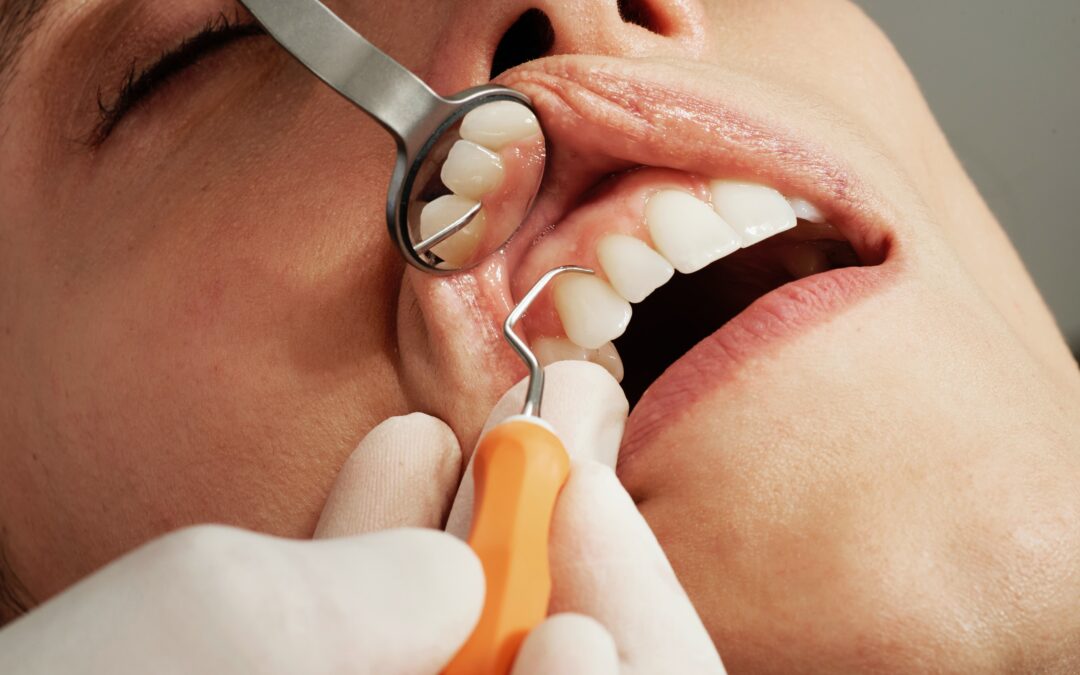Types of Periodontal Gum Disease
There’s no denying that America’s oral health has dramatically improved over the past few decades, thanks to advances in dental care and hygiene. However, one area of oral health remains a concern: periodontal (gum) disease.
Otherwise known as periodontitis (per-e-o-don-TIE-tis), periodontal disease affects 3 out of 4 Americans. That’s a staggering 75% of the population! What’s even more concerning is that many people don’t even realize they have the condition. So, what exactly is periodontal disease?
What’s Periodontal Disease?
Periodontal disease is an infection of the tissues that support your teeth. It’s typically caused by poor brushing and flossing habits that allow plaque—a sticky film of food debris, bacteria, and saliva—to build up on the teeth and harden. If left untreated, periodontal disease can destroy the bone and connective tissue that support the teeth. As a result, teeth may become loose or fall out entirely.
Types of Periodontal Disease
There are various types of periodontal disease, each with its own symptoms and treatment methods. Here are the most common types:
Gingivitis
Gingivitis is the early stage of periodontal disease and is characterized by inflammation of the gums. It is usually caused by plaque build-up. If plaque is not removed, it can harden into tartar, which can irritate the gums and lead to gingivitis. Symptoms of gingivitis include redness, swelling, and bleeding of the gums. In some cases, gingivitis can also cause bad breath.
Gingivitis is usually treated with good oral hygiene practices, such as brushing and flossing twice a day and regular professional dental cleanings. Sometimes, additional treatments, such as antibiotics may be necessary.
Periodontitis
If left untreated, gingivitis can progress to periodontitis, a more serious form of periodontal disease. This condition can cause the gums to pull away from the teeth, resulting in tooth loss.
If you have periodontitis, your gums may bleed when you brush your teeth. Your gums may be red and swollen. You may have pus between your teeth and gums when the inflammation is severe. You may also have bad breath or taste in your mouth. Your teeth may feel loose or shift in your mouth. Treatment for periodontitis typically involves a combination of professional cleanings, medication, and at-home care. In severe cases, surgery may be necessary to restore oral health.
Aggressive Periodontitis
As the name suggests, aggressive periodontitis is a more severe form of the disease. It’s characterized by rapid bone loss and often leads to tooth loss. The most common symptom of aggressive periodontitis is bleeding gums. Other symptoms may include red, swollen, or tender gums; gum recession; and bad breath. Treatment for aggressive periodontitis generally involves a deep cleaning followed by regular cleanings and checkups. In some cases, antibiotics may also be prescribed.
Chronic Periodontitis
If left untreated, aggressive periodontitis can progress to chronic periodontitis. The early stages of chronic periodontitis may not cause any symptoms, but as the disease progresses, symptoms may include bleeding gums, receding gums, and eventually tooth loss. While chronic periodontitis is difficult to treat, early diagnosis and treatment can help slow the progression of the disease and reduce the risk of serious complications.
We hope this article has helped you better understand periodontal disease and the different types of gum disease. If you think you may have gum disease, it’s important to see a dentist or oral health care professional as soon as possible for an evaluation. Early diagnosis and treatment can help prevent serious complications from developing.


